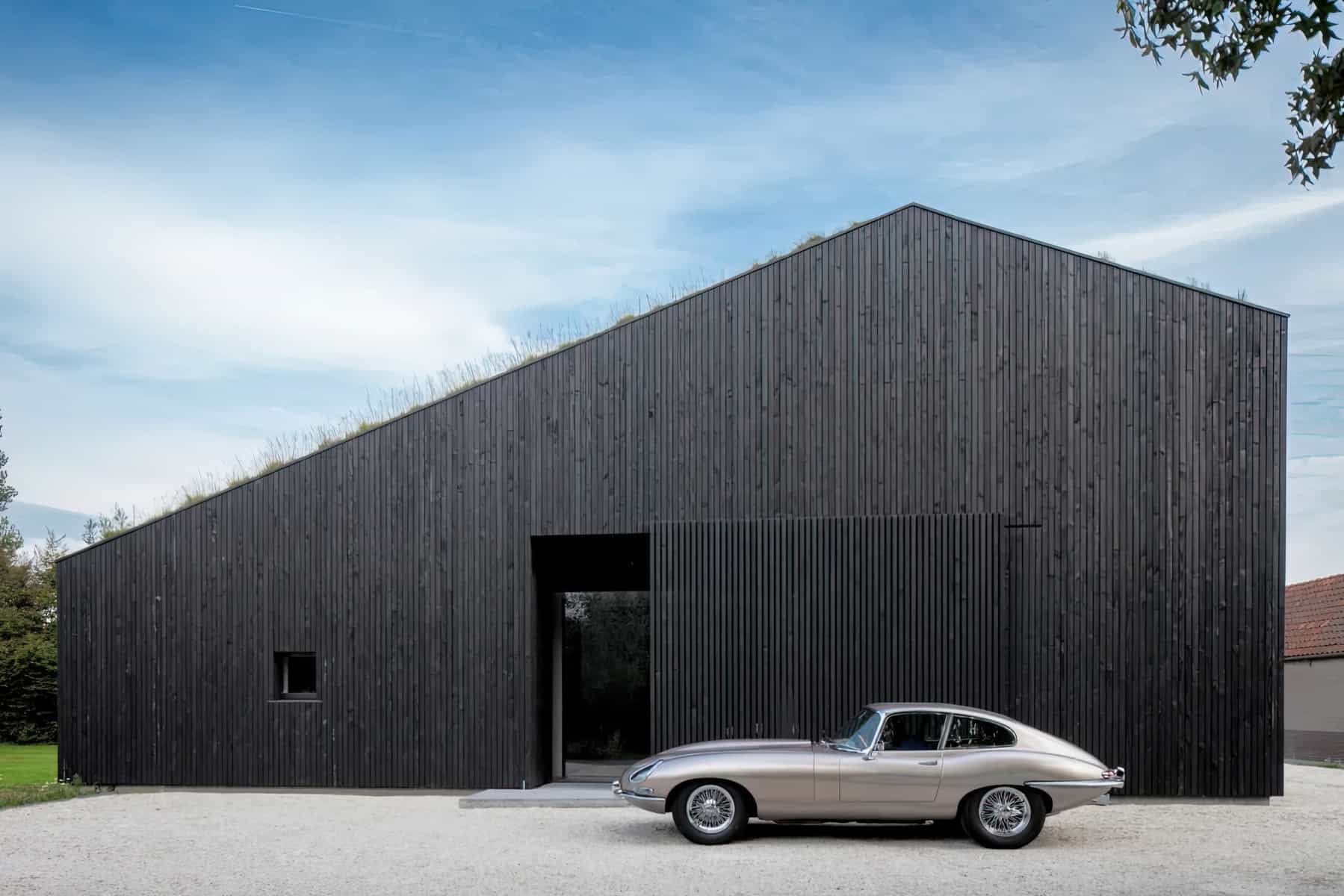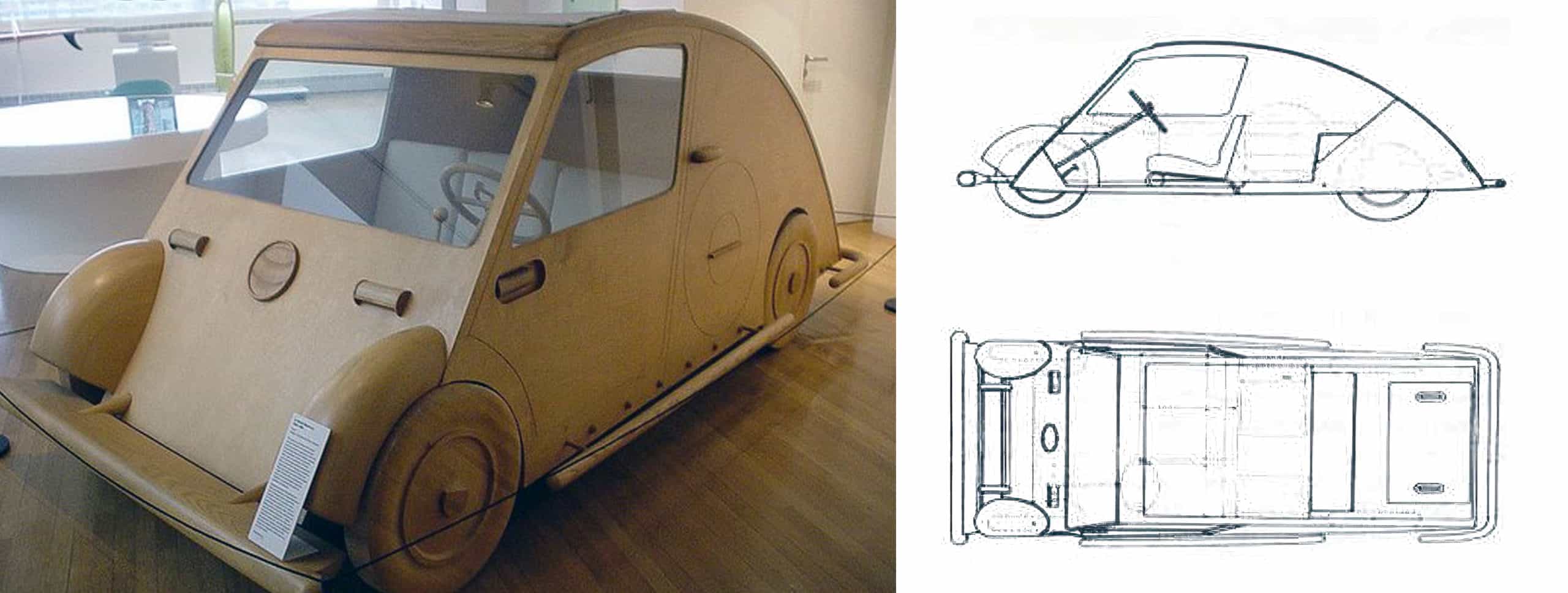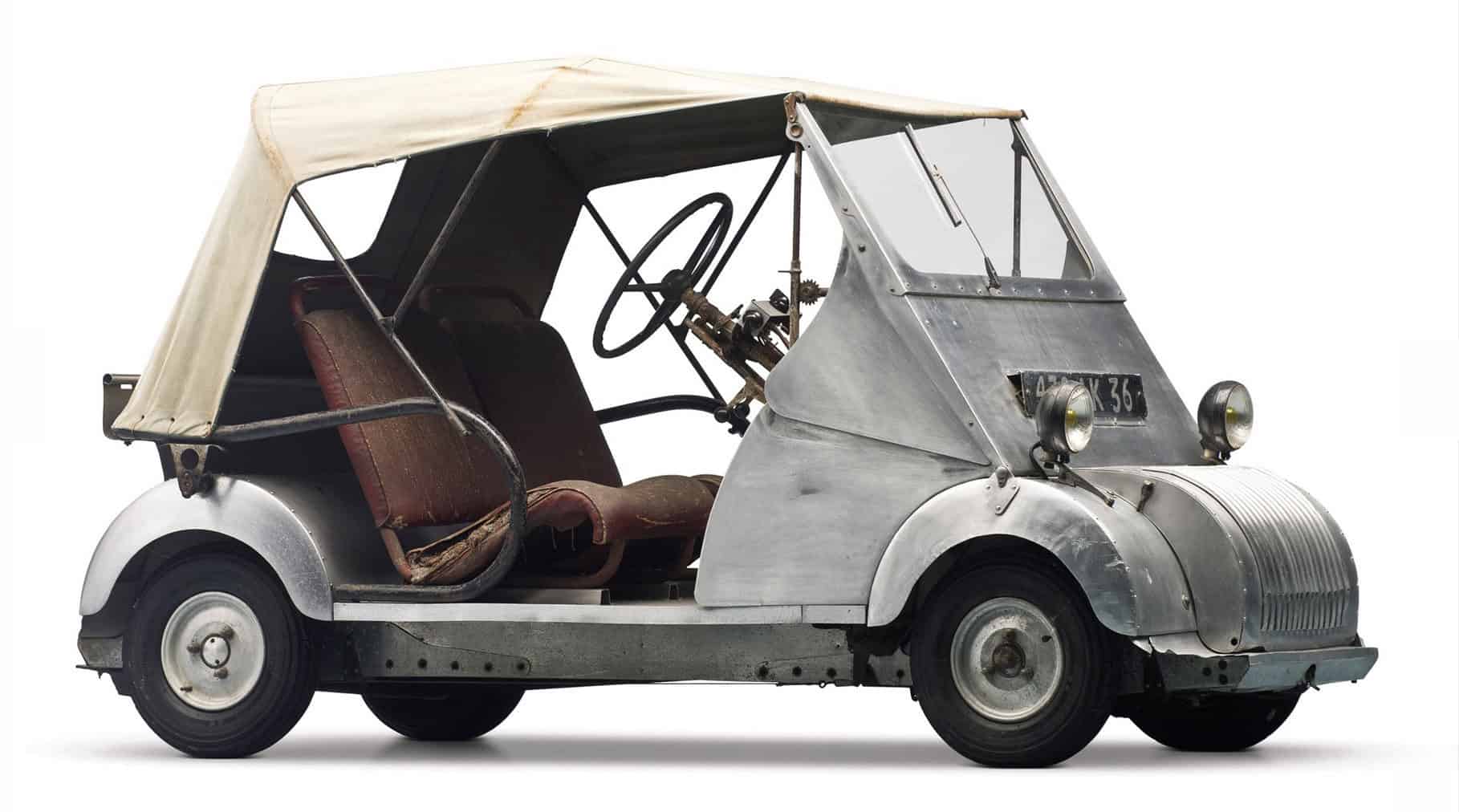Carchitecture
Exploring Le Corbusier’s Voiture Minimum and other grand designs
BY: PETER STEVENS
A surprising number of well-known architects have chosen to design an automobile at some point in their careers, but few chose to design a second. Years ago, noted Italian designer Giorgetto Giugiaro said that, unlike most other professions, far too many people would like to be a car designer, and all are eager to express their opinions about car design.
With the complexity of the modern automobile, it is impossible for any one individual to design a complete car in any detail; nevertheless, there are many engineers and architects who claim that, but for the time constraints, they would “style” their own vehicles and make a better job of it than professional designers.
To quote Architecture-Art-Design’s website, “The world of architecture is world famous for being one of the most prestigious and exciting fields of work in existence, but where all the glamour of such great design resides in a stationary artifice there are other designers who, quite literally, like to see their work zoom around all over the place. Those in question? Car designers. The envy of some of the greatest architects known to history. Including some that have even gone so far as to cross the divide, reconciling their envy by actually going on to design cars themselves.” Clumsily put, but true.

A newly published book that examines the relationship between the dynamic nature of the automobile with the static qualities of the house is an interesting concept. Carchitecture, by Thijs Demeulemeester, Thomas De Bruyne, and Bert Voet, aims to do exactly that with a series of short essays featuring mostly “modernist” houses and particular automobiles that the writers feel bring the houses to life. Either the words are supported by the photographs or vice versa, and the photographs are as stunning as the houses featured. Often the cars are front and center but occasionally they appear to just creep into the images.
Many of my favorite images are from that Mecca of American Modernism, Palm Springs, California, from where we are treated to a luscious selection of late 1940s to mid 1960s intensely styled luxury homes. There is influence from Frank Lloyd Wright and to a degree Le Corbusier, often because the architect had previously studied under those masters. There are also plenty of modernist architectural “statement houses” from Europe that provide either contrasts or comfortable conjunctions with the chosen cars.
It is a book that could encourage an understanding of why architects feel driven to extend their field of competence and take on board automobile design, a wish to have complete control of their environment maybe?

Italian architect and designer Mario Bellini’s 1972 “Kar-a-sutra” concept car was (probably thankfully) a one-off, as was architect and designer Gio Ponti’s 1952 idea for a four-door, four-seat family car. Working alongside his studio colleague, editor of design magazine Stile Industria, and son-in-law, Alberto Rosselli, he introduced the Linea Diamante concept to intense admiration from fellow architects – but a stunned silence from automotive designers and the car industry.
However, Le Corbusier’s Voiture Minimum is well worth examining in detail. Fascinatingly, Charles-Édouard Jeanneret (1887-1965), who re-named himself “Le Corbusier,” was a close personal friend of Gabriel Voisin (a favorite of many writers and readers of automotive history, notably Peter Mullin). Perhaps controversially, Voisin funded Le Corbusier’s “Plan Voisin,” a 1925 proposal to completely redesign Paris that was never implemented. But during the late 1920s and ’30s Le Corbusier was captivated by the automobile. He often said that it was a pointer to the future of architecture, the house being a machine for living in. Le Corbusier owned a Voisin C-7 Lumineuse, bought in 1925, and almost always instructed his photographers to feature this Voisin in front of his newly completed buildings. He saw the car as an indicator of modernity and an object that gave his work a sense of human scale. It is said that the radii of his project’s driveways were based on the turning circle of that same Voisin; true or not I like the thought.

In 1936 Le Corbusier entered a competition sponsored by France’s Société des Ingénieurs de l’Automobile (SIA). The challenge was to design a simple and inexpensive car for “the masses” to cost less than eight thousand francs – the equivalent at that time of about £50 in English money – the objective being to revitalize French industry that had been particularly badly hit by the world-wide Great Depression. Le Corbusier’s Voiture Minimum, described by both him and his friend and business manager Pierre Jeanneret as “a minimalist vehicle for maximum functionality,” was indeed simple but it had charm and interesting proportions – Corbusier was a devotee of the “Golden Ratio” and used the formula in all his architectural work. He did not win the competition, as the judges said the car did not meet the requirements of the competition. With its low cost requirement, it is doubtful if any entrant’s proposals did. Rejected, Corbusier then took his concept to both Fiat and Tatra, neither company expressing any interest in the idea; there is no evidence that he may also have shown his ideas to Citroën, but there are conceptual, rather than stylistic, similarities with the early prototype 2CVs. As ever with a figure as controversial as Le Corbusier, when in 1936 his office released a tiny rough sketch of a concept Citroën looking like the Voiture Minimum but dated 1928, there were, and still are, many who believe this to be “an image after the fact.”
Giorgietto Giugiaro has always been very taken with the Voiture Minimum, so much so that in 1987 he built a full-size wooden mock-up of the car for L’Aventure Le Corbusier: 1887-1965, an exhibition held at the Pompidou Centre in Paris to celebrate the architect’s work. Giugiaro said of the car at the time, “it is so full of inventive touches that even nowadays they are among the most advanced proposals,” adding that it was “following the principles of aerodynamics that were sensed long before prototypes were placed in wind tunnels.” He even completed some drawings of how he thought the interior should be.

I believe that it is almost certain that Corbusier would have discussed his concept with close friend Gabriel Voisin. There is therefore a strong possibility that Voisin’s charming but bizarre little late 1940s minimalist, ultra-basic car for his Avions Voisin company, the Biscooter, was influenced by the Voiture Minimum. Its simplicity and confident overturning of conventional design ideas, typical of both Le Corbusier and Voisin, suggest a commonality of thought. Sadly, neither consumers nor French manufacturers were interested in the strange little car, causing Voisin to license the production of the car to Spanish firm Autonacional S.A. of Barcelona in 1953; locally it was called the Biscúter and more than ten thousand were built during its seven-year life.
Phil Patton in The New York Times suggested that, like many architects after him, Le Corbusier thought automotive production offered an exemplary model for how to build housing more cheaply and efficiently. “If houses were built industrially, mass-produced like chassis, an aesthetic would be formed with surprising precision,” he wrote in Toward an Architecture, his series of essays published in 1923. It would be hard to disagree with this highly futuristic vision.


As a guide to the work of the aspiring young architects who effectively brought the “American Dream” to life, Carchitecture gives the reader a quick introduction to this dynamic period in the U.S. There are a number of essays interspersed between chapters that examine in more detail subjects ranging from “Why Saab was the architect’s car par excellence,” to “How the car became Frank Lloyd Wright’s ultimate muse,” with further thoughts on Le Corbusier and his relationship with the automobile and Art Deco. To a degree these essays leave one hoping for more. What is particularly interesting is that there are no notable buildings that have been designed by car designers, but as backdrops for their work, fine architecture can say a lot more about the automobile than photographs taken in the sterile environment of a photographic studio.
Carchitecture is not the kind of book that one reads cover to cover in one sitting nor is it a coffee table book that friends might choose to pick up and glance at; rather it is something to savor, perhaps a chapter at a time, and come away encouraged to undertake further research.



![alfa gtz perfectly imperfect webannerl[1]](https://automedia.revsinstitute.org/wp-content/uploads/2024/08/Alfa-GTZ-Perfectly-Imperfect-webannerl1-uai-1200x800.jpg)

